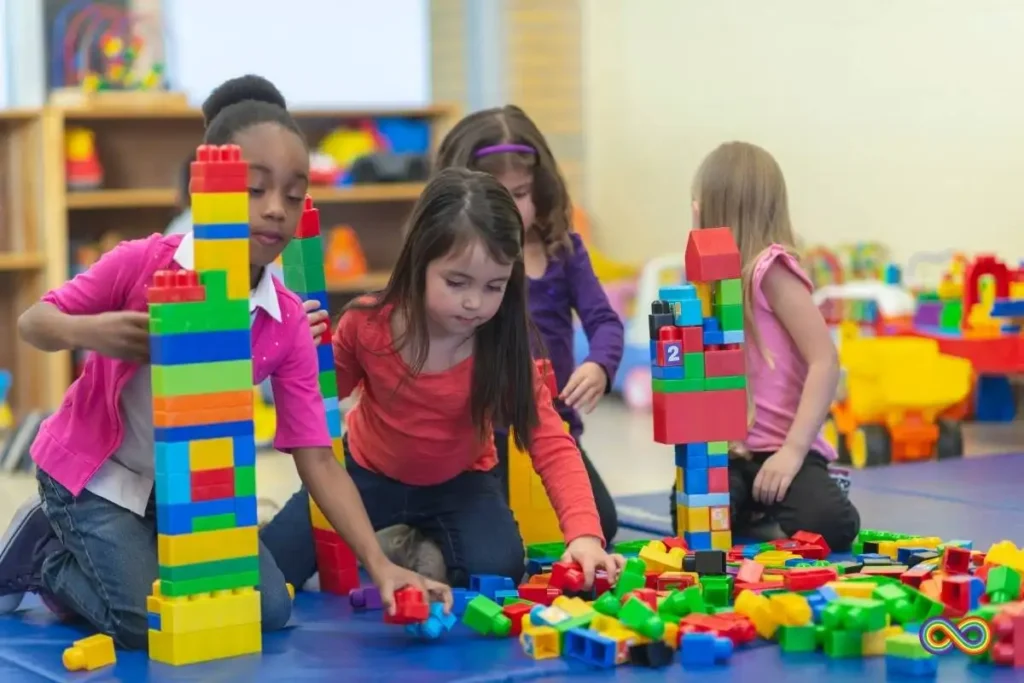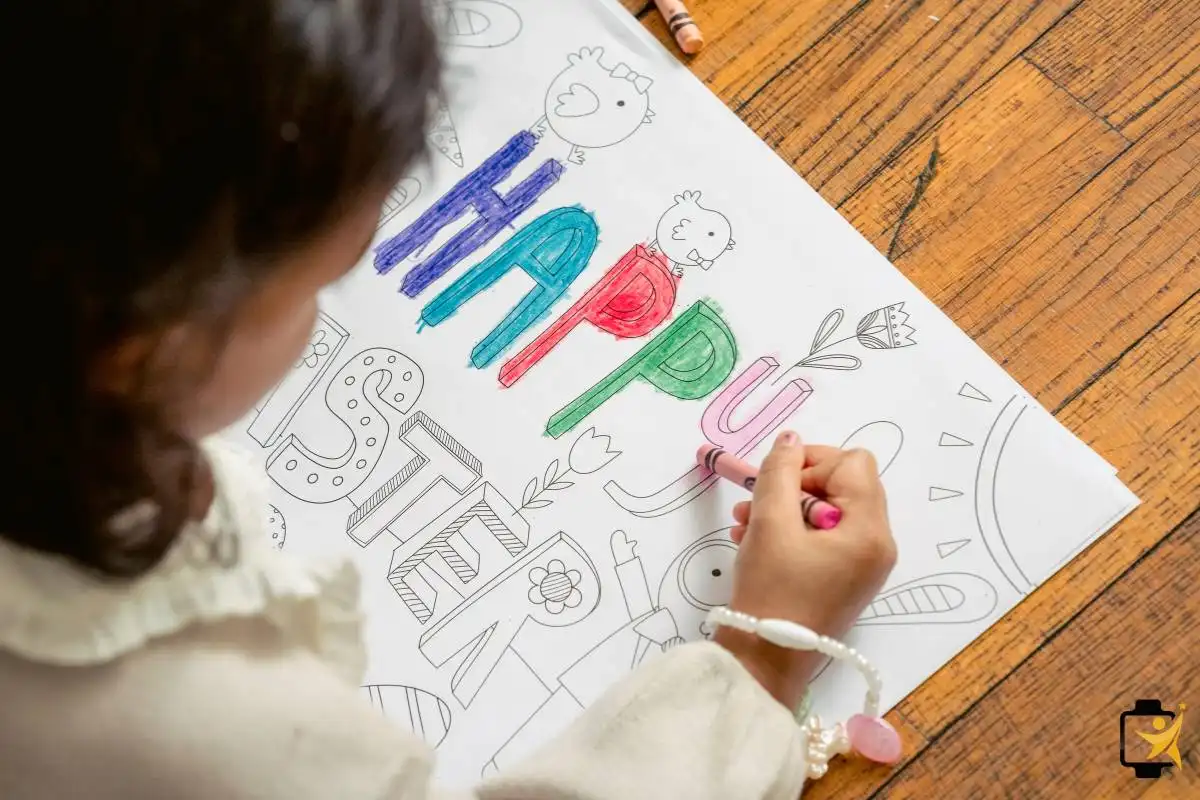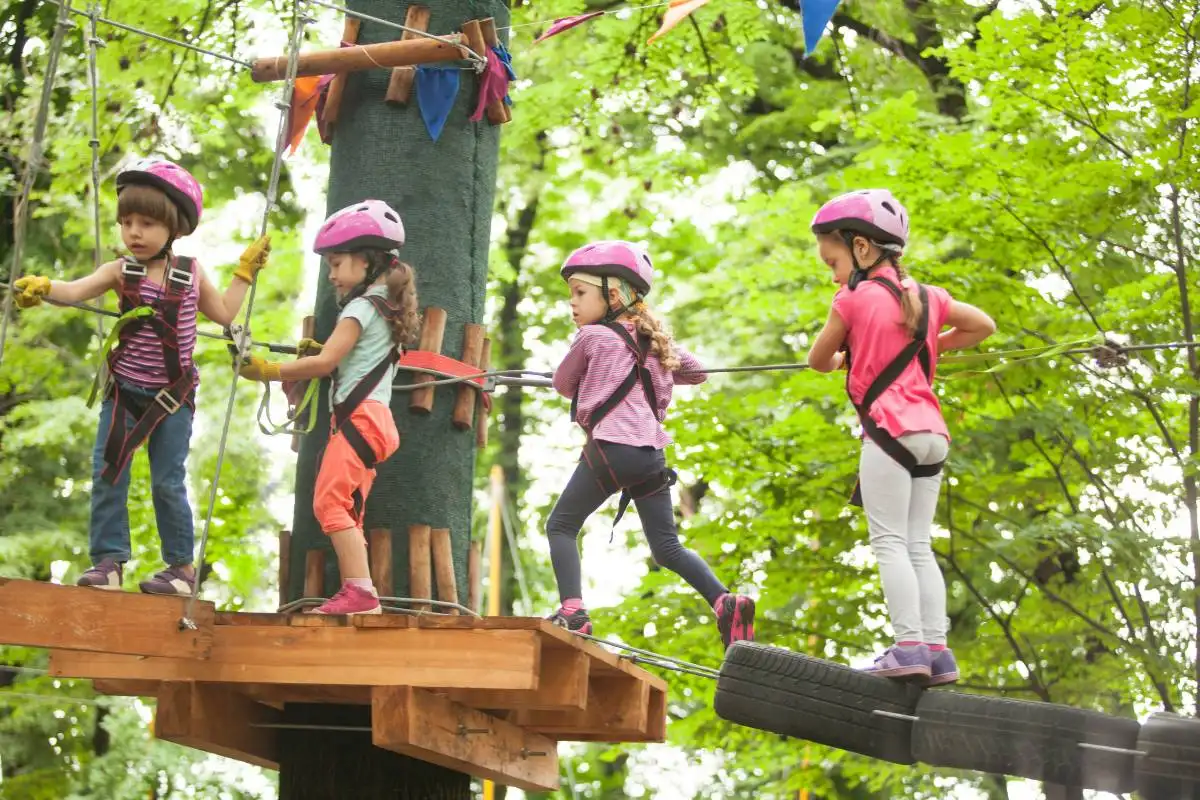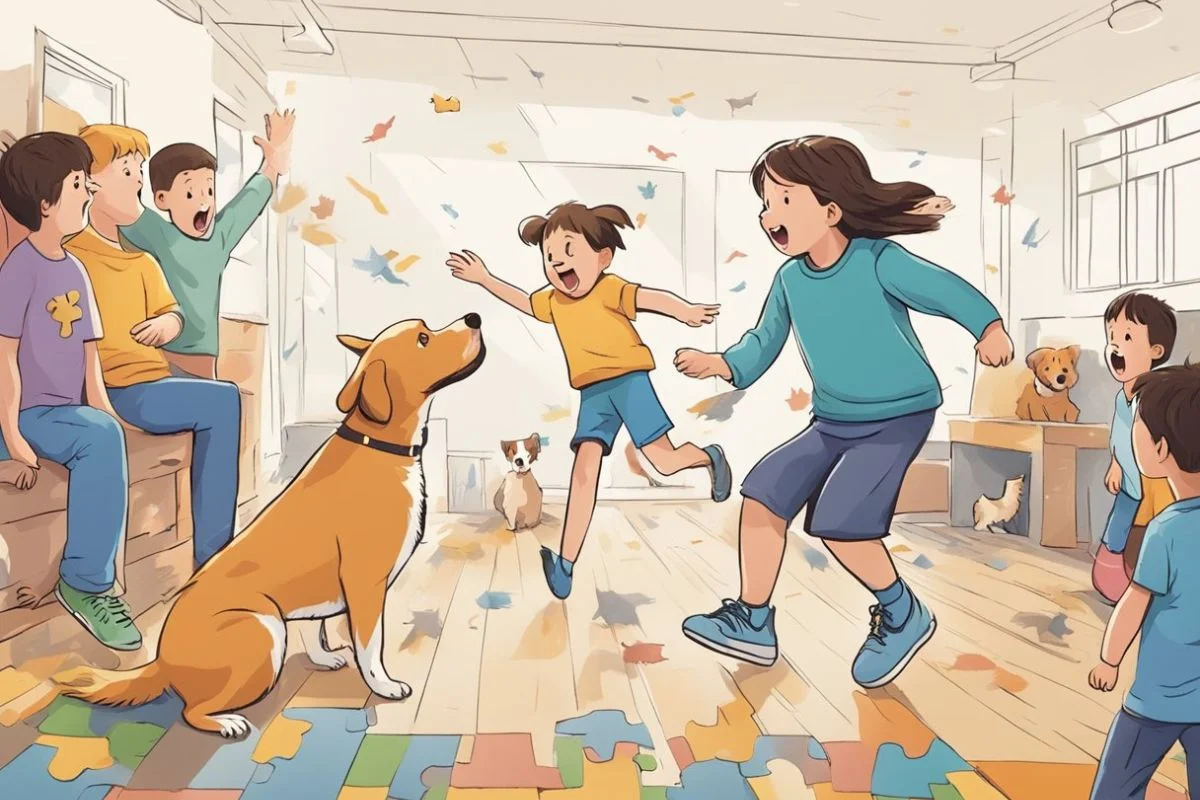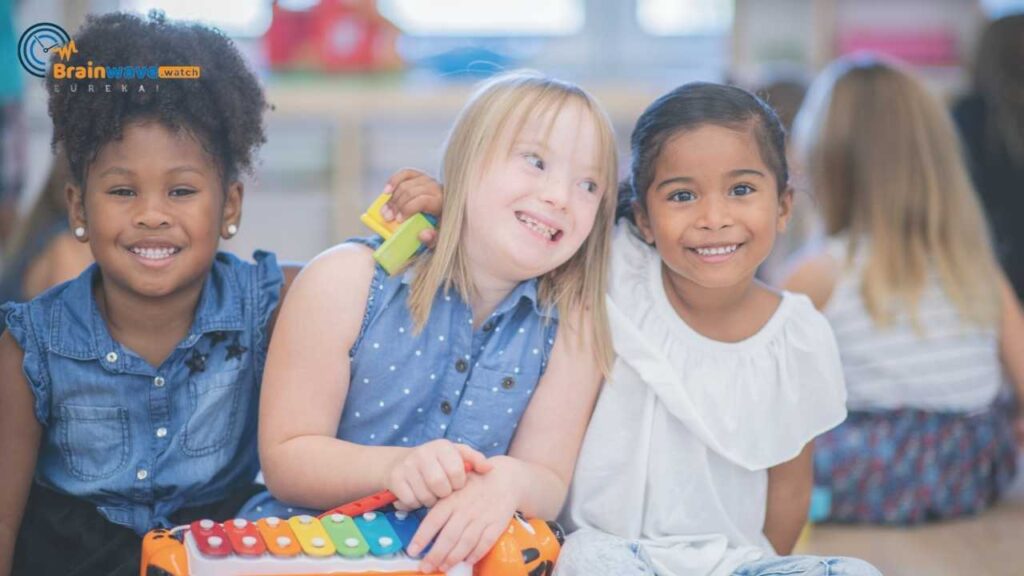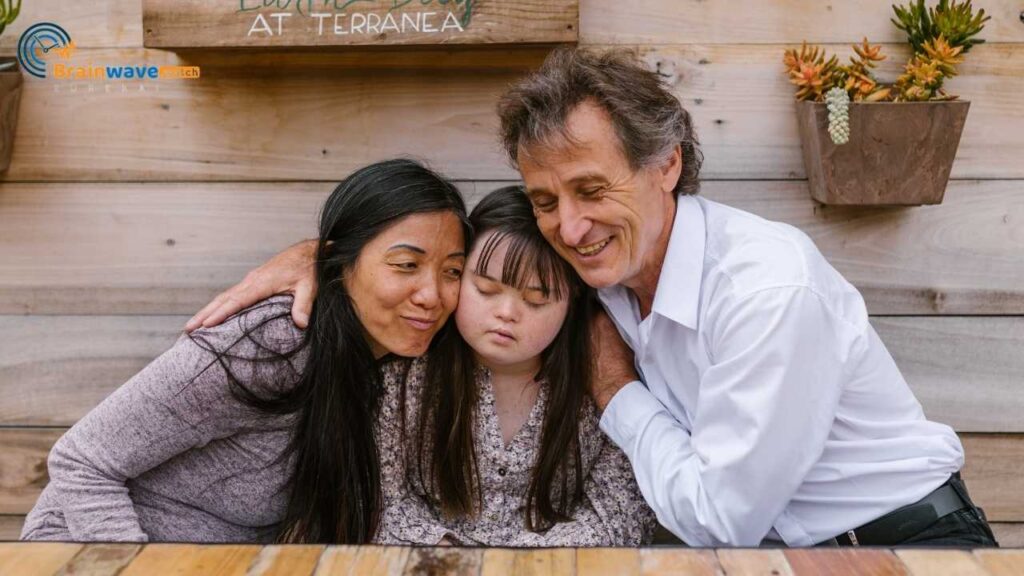Engaging special needs students in fun activities provides numerous benefits beyond just enjoyment. These activities can be designed to improve social, emotional, physical, and cognitive skills.
1. Improves Social Skills and Communication
Participating in group games, arts and crafts, music, and drama boosts social skills and communication. Activities that involve verbalizing, gesturing, sharing, taking turns, and cooperating with others help special needs students practice interacting. They learn vital skills like making eye contact, listening, expressing themselves, and reading social cues.
2. Provides Outlet for Self-Expression
Many special needs students struggle to communicate their feelings and energy. Fun activities give them an outlet to express themselves, expend energy, and healthily relieve anxiety. Unstructured creative activities like art, dance, and make-believe allow self-expression without pressure.
3. Boosts Self-Esteem and Confidence
Special needs children often lack confidence and feel isolated from peers. Accomplishing fun activities, especially those that challenge their abilities, gives their self-esteem a boost. Praise and encouragement throughout activities promote feelings of pride and self-worth.
4. Teaches Teamwork and Cooperation
Group games and activities require teamwork, patience, sharing, communication, and compromise. Special needs students learn to work together, rely on others, control impulses, and be helpful and inclusive of others.
5. Helps Develop Motor Skills
Many special needs students struggle with gross and fine motor skills. Active games and craft activities that involve movement, coordination, and dexterity help strengthen their muscles and motor control. This improves their mobility, balance, and ability to perform day-to-day tasks.
Adapting Activities for Different Ability Levels
When planning fun activities for special needs students, it’s important to consider each child’s unique needs and abilities. Teachers and caregivers should aim to adapt activities so all students can participate in a meaningful way. Here are some tips for adapting activities:
- Offer modifications and accommodations. Provide alternate instructions, materials, or methods to allow participation. For example, allow a non-verbal child to answer questions by pointing.
- Use visual aids and demonstrations. Show students what to do through pictures, videos, or modeling. Visual learners will grasp concepts more easily.
- Adjust rules and expectations. Consider the skills of each child and modify rules or expectations accordingly. For instance, allow a student to score by rolling a ball towards a goal rather than throwing.
- Provide adaptive equipment. Specialized equipment like grip aids, balance balls, and fidget tools can help students with motor difficulties fully engage.
The goal is to make simple modifications so all students can join in the activity. With some flexibility and creativity, teachers can adapt most games and projects for children of diverse abilities. The result is an enriching experience that promotes inclusion.
Arts and Crafts Activities
Arts and crafts provide a fun and engaging way for special needs students to express themselves creatively. These activities help develop fine motor skills, hand-eye coordination, and visual-spatial skills. Arts and crafts are highly adaptable across ages and ability levels.
1. Drawing and Painting
Drawing and painting allow students to experiment with colors, shapes, and designs. Educators can provide a variety of materials like crayons, markers, paints, colored pencils, and chalk. For students with limited mobility, attaching art materials to handles or splints can enable participation. Using thick-handled brushes and rollers makes painting accessible too. Focus on the creative process rather than the end product.
2. Sculpting
Clay, playdough, and other sculpting materials enable students to mold and shape unique 3D creations. This helps strengthen finger muscles and hand coordination. Add textured materials like beans, beads, and pom poms to create sensory stimulation. Allow students to collaboratively work together on sculptures. Provide adaptive equipment like ring cuffs and specialized scissors based on student needs.
3. Sand Art
Playing with sand provides tactile sensory input. Fill a tray or table with colored sand and let students draw, write, and create designs using their fingers or tools like popsicle sticks. Hide small toys or objects in the sand for students to find, promoting discovery and cognitive skills. Pouring sand through funnels and sieves develops coordination.
4. Music and Dance
Incorporate music, dance, and dramatic play. Students can express themselves through movement and song. Use instruments like maracas, bells, and drums that are easy to grasp and shake. Scarves, ribbons, and hoops add visual dimension and range of motion when dancing. Acting out stories and roleplaying builds narrative and social skills.
Physical Activities
Physical activities provide great opportunities for special needs students to improve motor skills, coordination, strength, and fitness in an engaging and social environment.
Teachers can modify mainstream sports like soccer, basketball, and baseball to accommodate different ability levels. For example, use a beach ball instead of a regular ball, lower baskets, and adjust rules to enable participation.
Dance and movement games get students active in a playful way. Try freeze dance, musical chairs, follow the leader, or choreograph a simple routine. Yoga is wonderful for building balance, flexibility, and self-regulation.
Adapt poses and offer supports like chairs or blocks. Gentle nature walks outdoors provide sensory stimulation and a chance to observe surroundings. Allow students to set the pace, take breaks, and explore along the way.
With some adjustments, almost any physical activity can be made fun, achievable, and rewarding for special needs children. The sense of belonging and pride in accomplishment are invaluable.
Group Games and Activities
Group games and activities provide important opportunities for socialization and teamwork for special needs students. They allow students to practice communication, collaboration, sharing, taking turns, and other interpersonal skills.
Group games are also a fun way to learn academic or life skills in an engaging, hands-on manner. Here are some great group games and activities to try:
Scavenger Hunts
Scavenger hunts encourage students to work together to find items around the classroom or school. To adapt for different abilities:
- Assign roles like note taker, runner, etc. based on strengths
- Offer picture or word clues for non-readers
- Pair higher and lower-ability students
- Choose easy-to-find items
Trivia and Board Games
Playing trivia games or board games allows students to practice game skills like taking turns, handling competition, and winning/losing gracefully. Adaptations include:
- Choosing games with visual cues or simple rules
- Allowing alternate forms of participation like spinning the wheel or moving game pieces
- Pairing or grouping students by ability level to keep pace and manageable
Dramatic Play
Pretend play builds social skills, self-expression, and imagination. Include props, costumes, and puppets to facilitate play. Assign roles based on abilities. Guide with open-ended questions and modeling.
Cooking and Baking Projects
Kitchen play promotes math, reading, and life skills. Supervise closely for safety. Give step-by-step instructions with visuals. Assign tasks based on mobility and cognition. Adapt tools for easier grasping. Allow sensory exploration of ingredients.
Field Trips and Community Outings
Field trips and community outings provide wonderful opportunities for special needs students to learn, explore, and have fun outside of the classroom. These experiences help build life skills, social skills, independence, and self-confidence. Consider the following destinations and tips:
Zoos, Aquariums, Museums
- Zoos allow students to observe exotic animals up close and learn about wildlife conservation. Make accommodations for students sensitive to loud noises or crowds.
- Aquariums provide multi-sensory experiences with sea creatures, textures, and lighting effects. Check for accessibility features and quiet spaces if needed.
- Museums let students immerse themselves in art, history, science, and culture. Look for hands-on exhibits and workshops adapted for special needs.
Parks, Gardens, Nature Centers
- Parks offer space to run, play, or relax. Look for adaptive playgrounds and walking trails suited for all ability levels.
- Botanical gardens provide opportunities to connect with nature and beautiful landscapes. Sensory gardens stimulate sight, smell, hearing, and touch.
- Nature centers have interactive exhibits and programming about local wildlife and ecosystems. Trails may be wheelchair accessible.
Fairs, Festivals, Shows
- Fairs and festivals celebrate community traditions with rides, games, food, and entertainment. Prepare for crowds, noise, costs, and visual stimulation.
- Sporting events, parades, and air shows provide excitement. Arrive early for good seating and sensory accommodations if needed.
- Theater and music performances showcase the arts. Look for “sensory-friendly” showings adapted for special needs.
Libraries, Recreational Facilities
- Libraries offer reading programs, events, classes, and accessible resources. Seek adaptive technology and inclusive services.
- Recreation centers provide swimming, sports, classes, and playgrounds. Look for specialized staff and adaptive programs.
With some planning for sensory, physical, and developmental needs, community outings can be rewarding and engaging adventures for all ability levels.
Sensory Play
Sensory play can provide immense benefits for special needs students. The tactile stimulation helps engage multiple senses, promotes focus and concentration, and provides a fun outlet. Some great sensory play activities include:
Sand and Water Tables
Sand and water tables allow students to dig, pour, sift, scoop, and engage in sensory exploration. Add toys like buckets, shovels, funnels, and molds for more creative play. Supervise closely to prevent eating sand. Consider kinetic sand for students prone to eating sand. Add color drops to water for visual effects.
Playdough, Slime, Goop
These moldable substances provide tactile stimulation. Playdough strengthens fine motor skills as students squish, roll, and shape. Add cookie cutters, rolling pins, or craft sticks. Make scented playdough by adding extracts. Slime and goop have stretchy, oozing textures. Add glitter or beads. Supervise closely.
Fidget Toys
Fidget toys like tangles, spinners, and cubes allow sensory input. They can increase focus, provide a calming outlet, and strengthen fine motor skills. Offer a variety to see which types students prefer.
Light and Sound Toys
Toys with lights, music, and motion appeal to multiple senses. Try light-up balls, musical instruments, dancing scarves, and bubble tubes. See if visual tracking improves. Ensure proper volume control.
Sensory play allows students to learn through hands-on engagement. Adjust activities to the student’s needs and abilities. Supervise closely for safety and offer positive reinforcement. Make it a fun learning experience!
Music, Drama, and Performance
Music, drama, and performance activities provide wonderful creative outlets for special needs students while also building confidence and social skills. Singing familiar songs together teaches rhythm, memory, and teamwork.
Simple dance moves to fun upbeat music get students moving and smiling. Playing basic rhythms on musical instruments like shakers, drums, xylophones, or tone bars improves coordination and focus.
Acting out stories, plays, or skits lets students use their imagination and creativity. They can take on different roles, express emotions, and interact with peers. Poetry readings allow students to work on oral language, expression, and public speaking. Puppet shows utilize storytelling while building fine motor skills.
All of these performance activities aid social development, self-esteem, and relationship-building joyfully. They provide a positive outlet for energy and emotions. The arts bring out hidden talents and allow students to shine.
Therapeutic Activities
Therapeutic activities provide physical, emotional, social, and cognitive benefits for special needs students. Structured programs led by trained professionals can help students develop skills, self-confidence, and emotional well-being. Some popular therapeutic activities include:
1. Animal Therapy
Animal-assisted therapy uses dogs, horses, dolphins, and other animals to motivate and engage students. Interacting with animals can reduce anxiety, improve communication, and increase focus and social skills. Tasks like grooming, feeding, or walking an animal provide sensory stimulation. Riding horses builds core strength and coordination. Schools may bring therapy animals on-site or arrange field trips to farms, aquariums, or riding stables.
2. Art and Music Therapy
Expressive therapies tap into students’ creativity. Art therapy uses drawing, painting, sculpture, and other visual arts to encourage self-expression. Students engage their senses by handling art materials. Following directions to complete projects builds cognitive skills. Music therapy incorporates singing, listening, improvisation, and songwriting. Making music together reduces isolation and builds social bonds. Both art and music therapy can help students process emotions.
3. Exercise and Movement Therapy
Physical exercise boosts endorphins, improves mood, and reduces anxiety. Occupational therapists may use exercise balls, balance boards, trampolines, and other equipment to develop motor skills and sensory processing. Yoga and dance therapy promote coordination, strength, and body awareness. Some schools have sensory gyms with equipment like swings and crash pads. Outdoor activities like nature walks, gardening, and sports build physical fitness.
4. Nature and Horticulture Therapy
Interacting with plants and nature has proven mental health benefits. Gardening develops fine motor skills and provides sensory stimulation. Observing plant growth teaches science concepts. Horticulture therapy promotes relaxation, creativity, and community. Schools can create butterfly gardens, greenhouses, and nature trails on campus. Community gardens and trips to botanical gardens provide immersive nature experiences. Caring for plants builds responsibility and self-esteem.
Adapting Activities to Age and Ability
Special needs students have a wide range of abilities and interests. It’s important to adapt activities appropriately to engage students while supporting their development.
Simple Games for Younger Students
Younger students often benefit from simple games that focus on basic concepts like colors, numbers, letters, and shapes. Matching games, puzzles with knobs, and ball games can teach cause-and-effect and hand-eye coordination. Sing-alongs, fingerplays, and movement songs are fun and interactive for this age group.
More Complex Projects for Older Students
As students get older, activities can incorporate more steps and complexity. Arts and crafts projects like painting, jewelry making, and sewing can enable creativity. Building activities like Lego and block construction promote fine motor skills. Interactive technology like touchscreen games and educational apps appeal to older students and build digital literacy.
Focusing on Strengths and Interests
Observe students’ abilities and passions, then design activities that allow them to utilize their strengths. If a student excels at math, incorporate numbers or sequences. Creative students, find outlets like drawing, drama, or making music. When students are deeply engaged in activities they enjoy, it builds confidence and skills.
Collaborating with Therapists and Teachers
Work with a student’s therapist, teachers, and parents to understand their needs and goals. Tailor activities to target specific developmental areas or emerging skills the student is working on. Maintaining open communication ensures activities remain focused, appropriate, and fun.

